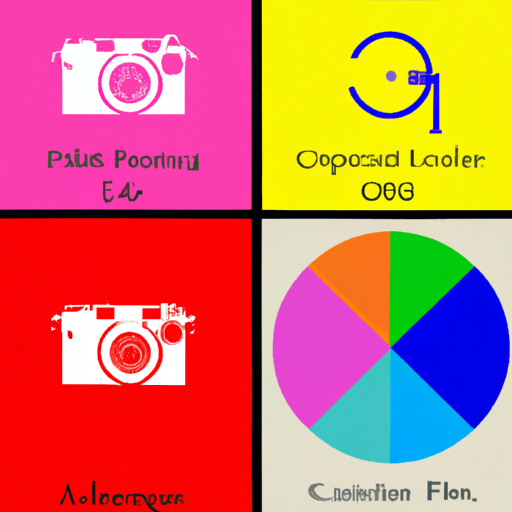
-
Table of Contents
The Language of Symbols: Cultural Significance in Design

Design is a powerful tool that goes beyond aesthetics. It has the ability to communicate ideas, evoke emotions, and convey cultural significance. One of the key elements in design that carries this weight is the use of symbols. Symbols have been used throughout history to represent concepts, beliefs, and values, and they continue to play a crucial role in contemporary design. In this article, we will explore the language of symbols and their cultural significance in design.
The Power of Symbols
Symbols are visual representations that carry meaning beyond their literal form. They have the ability to transcend language barriers and communicate complex ideas in a simple and universal way. Symbols tap into our subconscious and evoke emotions, making them a powerful tool for designers to convey messages and create connections with their audience.
For example, the peace symbol, a simple combination of a circle and three lines, has become a globally recognized symbol for peace and non-violence. It originated in the 1950s as a symbol for the Campaign for Nuclear Disarmament and has since been adopted by various movements and organizations around the world. The power of this symbol lies in its ability to convey a message of peace without the need for words.
The Cultural Significance of Symbols
Symbols are deeply rooted in culture and carry cultural significance. They reflect the values, beliefs, and traditions of a particular society or community. Understanding the cultural context of symbols is essential for designers to create meaningful and impactful designs.
Take, for example, the lotus flower in Eastern cultures. In Buddhism, the lotus flower symbolizes purity, enlightenment, and spiritual awakening. It is often depicted in Buddhist art and architecture, representing the journey towards enlightenment. Understanding the cultural significance of the lotus flower allows designers to incorporate it into their designs in a way that resonates with the intended audience.
Case Study: Nike’s Swoosh
One of the most iconic symbols in the world of design is Nike’s swoosh. Created in 1971 by Carolyn Davidson, the swoosh has become synonymous with the Nike brand. The simplicity and fluidity of the symbol convey a sense of movement and speed, aligning with Nike’s brand values of athleticism and performance.
However, the swoosh also carries cultural significance. It has become a symbol of status and aspiration, representing the pursuit of excellence and success. Nike’s marketing campaigns have further reinforced this cultural meaning, associating the swoosh with famous athletes and inspiring stories of achievement.
The Evolution of Symbols in Design
Symbols in design have evolved over time, adapting to changes in society and culture. As new ideas and values emerge, designers find new ways to represent them through symbols. This evolution is evident in the use of symbols in branding and logo design.
For example, the recycling symbol, three arrows forming a triangle, was created in 1970 to represent recycling and environmental sustainability. It has since become a widely recognized symbol, appearing on recycling bins, packaging, and products. As environmental awareness has grown, the recycling symbol has evolved to include variations that represent specific materials, such as plastic or paper.
Case Study: Apple’s Logo
Apple’s logo is another example of how symbols in design have evolved. The original logo, created in 1977, featured a detailed illustration of Sir Isaac Newton sitting under an apple tree. While the logo represented knowledge and discovery, it was complex and lacked the simplicity that would later become synonymous with Apple’s design philosophy.
In 1998, Apple introduced the iconic bitten apple logo, designed by Rob Janoff. The simplicity of the symbol, combined with its cultural references to the biblical story of Adam and Eve, created a powerful and memorable logo. The bitten apple has become a symbol of innovation, creativity, and the pursuit of knowledge, aligning with Apple’s brand values.
The Importance of Cultural Sensitivity in Design
When using symbols in design, it is crucial to be culturally sensitive and aware of the potential impact they may have. Symbols can carry different meanings and associations in different cultures, and using them without understanding their cultural significance can lead to misunderstandings or offense.
For example, the swastika, an ancient symbol with positive connotations in Hinduism, Buddhism, and Jainism, was appropriated by the Nazi party and became a symbol of hate and genocide. The swastika is now widely associated with the atrocities committed during World War II, and its use in design without proper context can be highly offensive.
Designers must research and understand the cultural significance of symbols before incorporating them into their designs. This includes considering the historical context, cultural associations, and potential interpretations of the symbol.
Conclusion
The language of symbols is a powerful tool in design, allowing designers to communicate ideas, evoke emotions, and convey cultural significance. Symbols have the ability to transcend language barriers and tap into our subconscious, making them a universal and impactful form of communication.
Understanding the cultural significance of symbols is essential for designers to create meaningful and impactful designs. Symbols are deeply rooted in culture and reflect the values, beliefs, and traditions of a particular society or community. By incorporating symbols that resonate with the intended audience, designers can create designs that are not only visually appealing but also culturally relevant.
As symbols in design continue to evolve, it is important for designers to be culturally sensitive and aware of the potential impact their designs may have. Symbols can carry different meanings and associations in different cultures, and using them without understanding their cultural significance can lead to misunderstandings or offense.
In conclusion, the language of symbols is a powerful tool that designers can use to create meaningful and impactful designs. By understanding the cultural significance of symbols and being culturally sensitive in their use, designers can create designs that resonate with their audience and convey messages that transcend language barriers.
